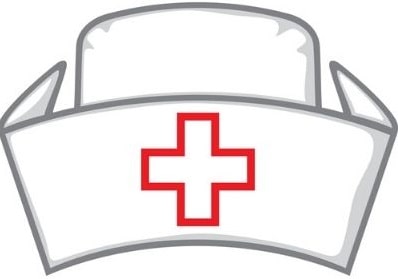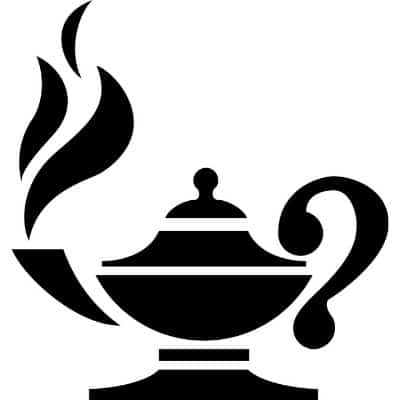What Do Different Nurse Symbols Mean? The Top 4 Symbols & Origins
Most people would often overlook the various symbols related to the medical field. Nursing students and practitioners, however, know their significance and what they represent. These nurse symbols tell a story about this noble healthcare profession.
Are you interested to know what RN symbols represent or why the nursing logo is designed as such? Read on and find out.
1. The Caduceus
The Caduceus is probably the most popular symbol for nursing. It is also the oldest symbol dedicated to this field. It features a staff wrapped by two serpents and a set of wings on top. It is widely used in various nursing paraphernalia like medical equipment and uniforms.
The origin of this nursing logo can be traced back to Ancient Greece as it was the same staff carried by the Greek god, Hermes. Later on, a similar symbol was found in Ancient India. Some historical accounts also say that the oldest imagery of this symbol was from Mesopotamia. The Roman civilization also had their fair share of usage of this popular symbol as it was often depicted as a staff of Mercury, the messenger of the gods.
Despite its deep connection to medicine, this famous nurse symbol does not represent nursing or medicine at all. However, ancient Greece was known to incorporate a medical symbol that is quite similar to the Caduceus, which is called the Rod of Asclepius (1).
The two symbols are closely similar although the Rod of Asclepius only shows one serpent wrapped around a staff. Some historical scholars would suggest that the imagery was inspired by the practice of parasitic worm extraction from the human body using a stick.
As to the mix-up of the two closely similar symbols, it can be traced back to when the US Army Medical Corps used the Caduceus as their medicine symbol back in 1902 instead of the Rod of Asclepius. Since then, the same symbol has been used by several health organizations, except the World Health Organization as it uses the Rod of Asclepius without the wings.
A good example of an accessory that takes inspiration from Caduceus is the Sterling Silver Caduceus Angel Nursing Themed Pendant Necklace (2).
2. The Oil Lamp
This may be a lesser-known nursing symbol, but the Oil Lamp is a well-documented representation of the nursing field as it really represents the practice. The other symbols of nursing have ancient origins while the Oil Lamp does not, but it is much more significant to the practice. In fact, it is used in pinning ceremonies when new nurses recite a pledge while holding a lamp. The same symbol is also found in several nursing pins used in these ceremonies.
The Oil Lamp represents the dedication and selfless work of nurses. Didn’t Florence Nightingale (3) nurse the sick and dying with just an oil lamp to guide her at night?
Her noble service during the Crimean War from 1853 to 1856 was exceptional. According to historians, she would always stay up late, bring her lamp with her, and tend to the wounded. Hence, she was known as “The Lady with the Lamp”.
Nightingale’s dedication remained steadfast even after the war was over. She returned to London and put up the first nursing school where she trained several nurses to have the same dedication and compassion that she always had. Because of her, the once nursing profession common among old women and nuns has now become a highly reputable profession.
An actual oil lamp has now become synonymous with compassion, reliability, and goodwill, all attributes significant to the practice of nursing.
3. The Nurse Cap

Moreover, the nurse cap may no longer be popular in the United States, but their representation plays a huge role in what nursing is now. Its purpose was mainly to keep the hair of the nurse away from the face while they work. Overall, there were two kinds of nurse caps that were popularly used in the past–the long cap that covered all of the nurse’s head, and the short cap that only sits on top of the head.
The old practice of using nurse caps came from the habit of caregiving deaconesses from Early Christianity. These caregivers wore white habits to differentiate themselves as healthcare practitioners in their religious communities. More so, the evolution of the nurse cap went from being a veil to the cap we know nowadays. In some past practices, senior nurses had fancier nurse caps compared to their subordinates in order to represent their higher ranks.
While the nurse caps helped in keeping the nurses’ hair away from their faces and helped identify them as medical practitioners, the use of them has been stopped. This is because they are considered a potential transmitter of diseases from hospitals. Nonetheless, it remains a significant nursing symbol.
These days, the closest you can get to wearing one is with a Nurse Cap Necklace (4).
4. The Nurse Uniform
No nurse practitioner symbols could be more obvious than the nurse uniform. The usage of the traditional nurse uniforms may have been phased out in favor of the practical nursing scrubs, but their significance to nursing is not yet forgotten. Like the nurse cap, you would most likely think of the old school nurse uniform when you think of the nursing profession.
The traditional nurse uniform was composed of a blue dress, pinafore apron, and the classic nurse cap. For past nursing students, their ensemble also included a nursing pin which helped differentiate them as nursing students undergoing a practicum.
Just like the nurse cap, the traditional nurse uniform was also derived from the habits of the caregivers of the Early Christian community. Due to this, the nursing practice transitioned from being religious to a secular one, although the mode of clothing was retained until the arrival of the nursing scrubs. The evolution of the classic nurse uniform also included the design of one of the students of Florence Nightingale, and that design had been widely used all over the world.
These days, the nurse uniforms we see in clinics and hospitals are practical scrubs in different styles and colors because they are more clinical and sterile. They are also easy to clean and wash, which is a crucial consideration for nurses.
So what do different nurse symbols mean? Now you know the 4 most common medical symbols for nurses.
References
- https://en.wikipedia.org/wiki/Rod_of_Asclepius
- https://amzn.to/3eE2zmh
- https://www.biography.com/scientist/florence-nightingale
- https://etsy.me/2XdfJRc





